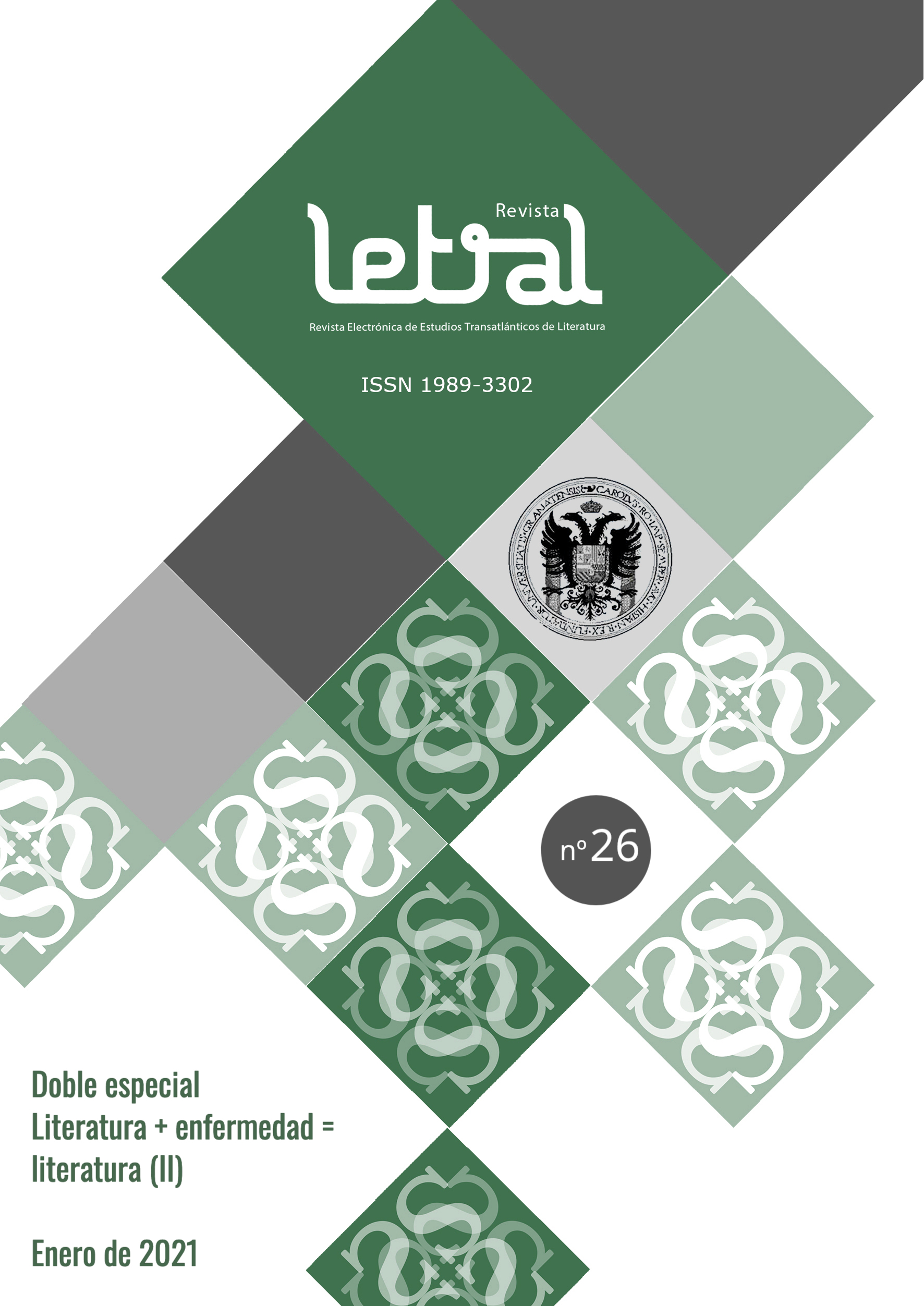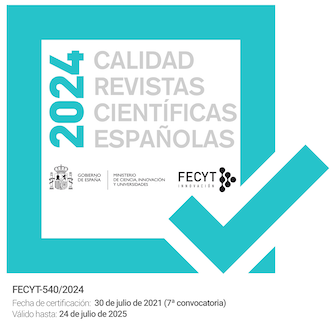Intimacy, Memory and Revelation: HIV/AIDS Representations in Néstor Perlongher’s and Caio Fernando Abreu’s Epistolary Writing
DOI:
https://doi.org/10.30827/rl.v0i26.16492Keywords:
HIV/AIDS, literature, disease, Néstor Perlongher, Caio fernando AbreuAbstract
This article analyzes the epistolary works of writers Néstor Perlongher and Caio Fernando Abreu. Both authors share their experiences living with HIV/AIDS in their personal correspondence that has been recently published in different publishing houses in São Paulo and Buenos Aires (Agir and Santiago Arcos editor). This article reads through this affective archive that both authors left for posterity and suggests Perlongher and Abreu have a contrasting system of writing about the epidemic and what it represents for gay men in the region. Despite being authors that followed different paths to develop their literary interests, Perlongher and Abreu left for posterity an archive that provides a comprehensive understanding of the social, medical and political aspects of living with HIV/AIDS in Latin America.
Downloads
References
Abreu, Caio Fernando. Cartas, Italo Moriconi (ed.), Rio de Janeiro, Editora Aeroplano, 2002.
Abreu, Caio Fernando. Onde andará Dulce Veiga?: Um romance B. Rio de Janeiro, Companhia das Letras, 1990.
Abreu, Caio Fernando. “Primera carta para além dos muros”. Pequenas Epifanias. Crônicas (1986-1995). Rio de Janeiro, Agir, 2006, pp. 106-08.
Abreu, Caio Fernando. “Segunda carta para além dos muros”. Pequenas Epifanias. Crônicas (1986-1995). Rio de Janeiro, Agir, 2006, pp. 109-11.
Abreu, Caio Fernando. “Última carta para além dos muros”. In Pequenas Epifanias. Crônicas (1986-1995). Rio de Janeiro, Agir, 2006, pp. 112-114.
Abreu, Caio Fernando. “Um uivo em memoria de Reinaldo Arenas”. In Pequenas Epifanias. Crônicas (1986-1995). Rio de Janeiro, Agir, 2006, pp. 127-29.
Álvarez, Eliseo (Dir.). Soy lo que soy con Sandra Mihanovich: Nestor Perlongher. Tranquilo Producciones para Artear, 2013.
Arenas, Fernando. “Small Epiphanies in the Night of the World. The Writing of Caio Fernando Abreu”. Lusosex: Gender and Sexuality in the Portuguese Speaking World. Minneapolis, University of Minnesota Press, 2002, p. 238.
Benjamin, Walter. “Theses on the Philosophy of History”. Illuminations: Essays and Reflections, Hannah Arendt (ed.), New York, Schocken Books, 2007, pp. 257-58.
Blanco, María del Pilar y Esther Pereen. “Spectral subjectivities: Gender, Sexuality, Race”. The Spectralities Reader: Ghosts and Haunting in Contemporary Cultural Theory, Maria del Pilar Blanco y Esther Pereen (eds.), London, Bloomsbury, 2013, pp. 309-10.
Bollig, Ben. “Néstor Perlongher and Mysticism: Towards A Critical Reappraisal”. The Modern Language Review, vol. 99, n.º 1, 2014, pp. 77-93.
Bouvet, Nora Esperanza. La escritura epistolar. Buenos Aires, Eudeba, 2006.
Cangi, Adrían. “Papeles insumisos. Imagen de un pensamiento”. Papeles insumisos. Adrián Cangi y Reynaldo Jiménez (eds.), Buenos Aires, Santiago Arcos Editor, 2004, pp. 17-18.
Cid Alarcón, Jorge Ignacio. “El culto al Santo Daime en la escritura de Néstor Perlongher: entre la integración del imaginario daimístico como sustrato textual y la creación de himnos de finalidad ritual”. Revista Iberoamericana, vol. 263, n.º 84, 2018, pp. 375-390.
Cioran, Emile. Exercises d’ admiration. Essais et potraits. Paris, Gallimard, 1986.
Derrida, Jacques. Specters of Marx: The State of the Debt, The Work of Mourning, and The New International. London, Routledge, 1994.
Dip, Paula. Para sempre teu, Caio F. Cartas, conversas, memórias de Caio Fernando Abreu. Rio de Janeiro, Editora Record, 2014, p. 14.
Epps, Brad. “La ética de la promiscuidad: reflexiones en torno a Néstor Perlongher”. Iberoamericana, vol. 5, n.º 18, 2005, pp. 145-162.
Gasparri, Javier. Néstor Perlongher: Por una política sexual. Rosario, FHumyAR, 2017, p. 126.
Giordano, Alberto. “Autoficción” entre literatura y vida”. Boletín de Centro de Estudios de Teoría y Crítica Literaria, n.º 17, 2013, pp. 1-20.
Gonçalves, Letícia. “Nos limites entre o real e o ficcional: a Aids na obra de Caio Fernando Abreu”. Criação & Crítica, n.º 17, 2016, pp. 132-145.
Mac Rae, Edward. “Recibir los himnos, pero celebrar el vacío”, in Néstor Perlongher. Papeles insumisos, Adrián Cangi y Reynaldo Jiménez (eds.), Buenos Aires, Santiago Arcos Editor, 2004. pp. 382-396.
Meruane, Lina. Viral Voyages: Tracing AIDS in Latin America. New York, Palgrave Macmillan, 2014.
Palmeiro, Cecilia. “Introducción.” Néstor Perlongher. Correspondencia, Cecilia Palmeiro (ed.), Buenos Aires, Mansalva, 2016, p. 13.
Perlongher, Néstor. Néstor Perlongher, Correspondencia. Cecilia Palmeiro (ed.). Buenos Aires, Mansalva, 2016.
Perlongher, Néstor. El fantasma del SIDA. Buenos Aires, Editorial Puntosur, 1988.
Perlongher, Néstor. Papeles insumisos. Adrián Cangi y Reynaldo Jiménez (eds.). Buenos Aires, Santiago Arcos Editor, 2004.
Perlongher, Néstor. “La desaparición de la homosexualidad”. Prosa plebeya. Ensayos 1980-1992, Buenos Aires, Colihue, 1997, pp. 85-92.
Preciado, Paul. ¿La muerte de la clínica? Vivir y resistir en la condición neoliberal. Córdoba, Bocavulvaria Ediciones, 2015, pp. 28-29.
Preciado, Paul. Testo Junkie. Sex, Drugs and Politics in the Pharmapornographic Era. New York, The Feminst Press at CUNY, 2013, p. 342.
Sontag, Susan. AIDS and its Metaphors. New York, Farrar, Straus, Giroux, 1989.
Trevisan, João Silvério. Devassos no paraíso: A homossexualidade no Brasil, da colônia à atualidade. Rio de Janeiro, Editora Record, 2000, pp. 451-52.
Published
How to Cite
Issue
Section
License
Revista Letral is an open access journal under a Creative Commons Atribución-NoComercial 4.0 license.
The works published in this journal may be reused, distributed and publicly presented for non-commercial purposes, provided that: cite the authorship and the original source of the publication (journal, publisher and URL of the work).
We strongly recommended you to share our published articles in social and scientific networks, institutional and public repositories, personal or institutional websites, blogs, Google Scholar, ORCID, ResearchID, ScopusID, etc.
The journal allow the author(s) to hold the copyright and to retain publishing rights without restrictions.
We are completely free, both for readers and authors.














